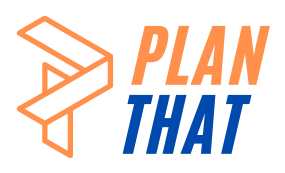While different project management skills are crucial for a project manager, project management tools, on the other hand, can be very useful for everyone involved in a particular project. These tools are helpful in any project in which different results are possible, risks exist and therefore requires resources, proper planning and organizing activities to be successful. Below are some of the project management tools that can be used for this purpose:
1. Project Charter
A project charter is a document that officially authorizes and approves a project. It is normally issued by the sponsors during the commencing stage of a project. A project charter authorizes a project manager to use organizational resources for the different project activities. It also significantly minimizes the risk of the project being called off, as a result of lack of enough support or perceived value by the company. A project charter contains the participants, objectives, and scope of a project. It also contains a preliminary definition of responsibilities and roles, defines the project manager’s authority, and names the key stakeholders.
A project charter documents the general objectives of a project and assists in managing expectations. As such, it can be viewed as the project’s target that serves as its future reference of authority. A project charter should be broad or extensive enough so that it eliminates the need for making future changes during the later stages of a project. In case changes are inevitably made to a project charter, it should be approved by the project’s sponsor(s).
2. Work Schedule
Irrespective of the scope or size of a project, a work schedule is a major part of its overall management. A work schedule comprises of the terminal elements of a project with the expected start and end dates. A terminal element is a work schedule’s lowest element that cannot be further subdivided. A work schedule contains information on when each project activity or task ought to be done, the order in which tasks should be completed, and those that have already been finished.
A work schedule, however, is not an accurate project management tool, as it does not provide a precise or exact process. In reality, it is part prediction, part estimation and part educated guess. Due to its uncertainty, a work schedule needs to be constantly reviewed as a project evolves. The purpose of a work schedule is essentially to transform a project from being a vision to a workable plan based on time. It acts as a platform for controlling and monitoring project activities. This helps to determine the best way of allocating organizational resources to achieve the goals of the project. It also helps to analyze the impact of time delays on the project and to tract the project’s progress.
3. Risk Matrix
Risk matrix is a project management software tool that helps to identify risks, determine their impact and probability to occur, and how they can be effectively managed. Risk identification is normally done in the second stage of project management. Probable risks in a project can be identified through organized or unstructured strategies or brainstorming. Once these risks are named, they need to be evaluated to determine their likelihood to occur with the assistance of a risk matrix. Risks can be categorized as critical, high, medium, and low. The probability to occur and its impact are the parameters used to place a risk on one of the four matrix categories.
For example, if a risk has a low probability to occur, say 2, and the greatest impact, say 4, its position on the risk matrix can be categorized as ‘high’. Following this evaluation, strategies should be developed to reduce the risk.
4. Status Report
During the execution stage of a project, a project manager is expected to be in regular communication with the stakeholders, sponsors and team, in order to keep them updated on the status of a project. A status report contains an up-to-date report of the status of a project, milestones achieved, upcoming work and open issues.
A status report should provide clear, consistent information regarding the activities of a project. However, if changes occur to the original project plan (schedule, resources, and expected deliveries among others) formal communication along with a status report should be created and submitted accordingly. Some of the information contained in a status report include start and end project dates, project status, overall completed percentage, notifications, contact info and comments on the development of the project.
5. Communication Plan
An effective communication plan can be the major difference between a successful project and a failed project. This is because a communication plan creates an effective schedule and pattern of all activities related to communication. For a project manager, a good percentage of his or her time is spent communicating with different stakeholders of a project.
A good communication plan ensures appropriate and timely generation, storage, distribution, retrieval, collection, and disposition of all project information. It provides vital links between information and people that are essential for effective communications. A communication plan also guides a project manager, team members, sponsors, stakeholders, customers, and everyone else involved in a particular project to understand the importance of communication in ensuring a successful completion.
In addition, a communication plan can contain guidelines for project status or analysis meetings, team meetings, email, and e-meetings. A communication plan can also be official or non official, broadly framed or highly detailed, and focused on the project needs. In general, a communication plan helps to ensure that effective communication is maintained throughout the project’s life, without which success cannot be guaranteed.
With these project management tools, different task or projects have better chances of achieving successful results. This is because they enable project managers and other stakeholders to effectively manage and plan for all kinds of tasks, even complex ones.
